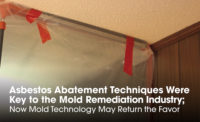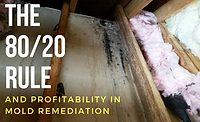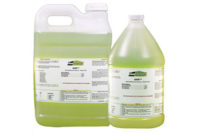- How do the various products work?
- What do the products actually do?
- What do the manufacturers claim?
- What do the rules or standard of care documents specifically say about mold stain removers?
- Are sensitized individuals involved?
- Does the scope address all aspects of the water damaged building?
- What clearance criteria will be used?
- Are there state regulations to follow in addition to the industry standard of care?
- Will appearance enhancement be added to the remediation effort?
- What sort of stain remover will be used?
- What are the risks and benefits of that particular product?





Report Abusive Comment